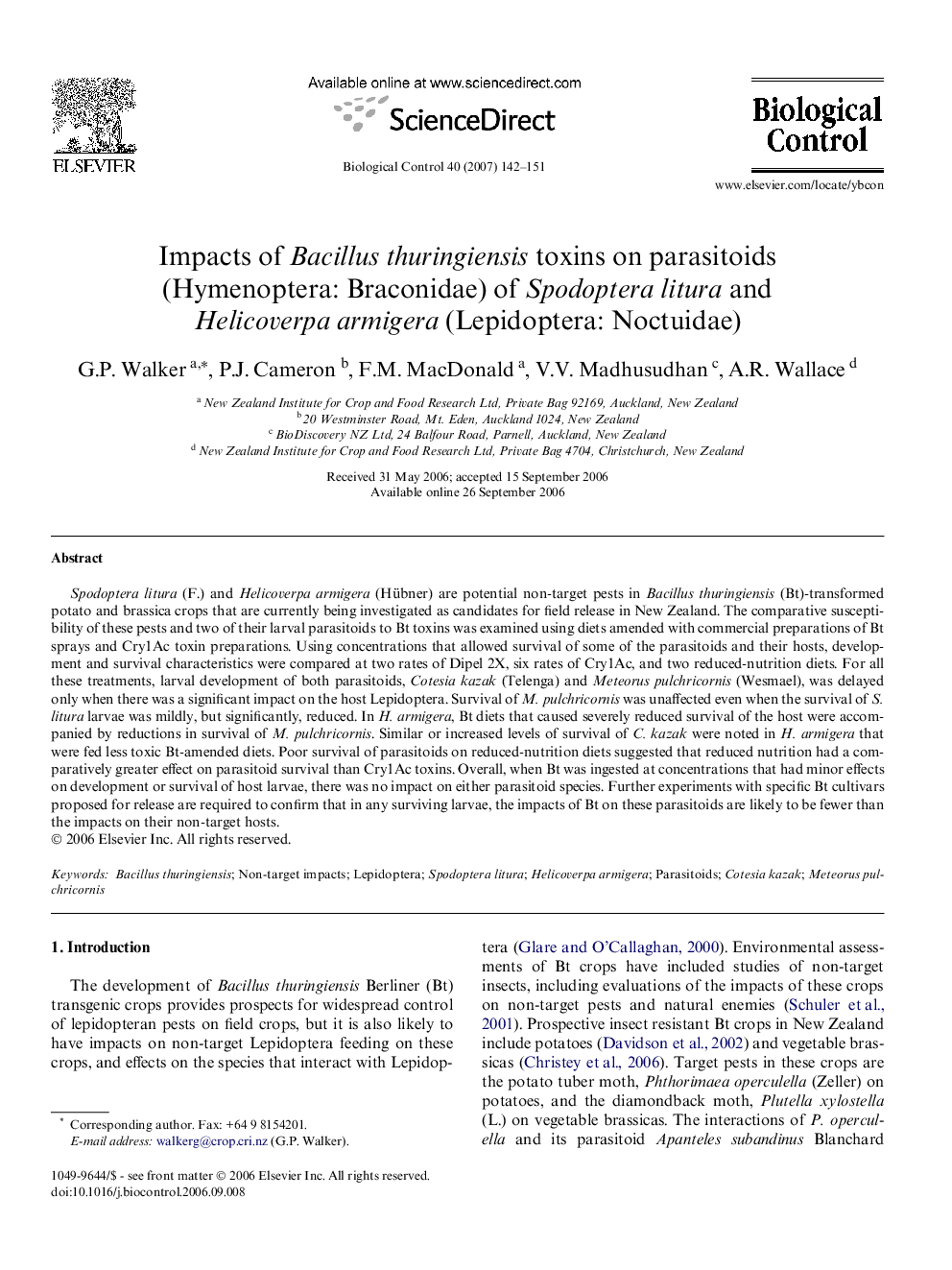| Article ID | Journal | Published Year | Pages | File Type |
|---|---|---|---|---|
| 4505312 | Biological Control | 2007 | 10 Pages |
Abstract
Spodoptera litura (F.) and Helicoverpa armigera (Hübner) are potential non-target pests in Bacillus thuringiensis (Bt)-transformed potato and brassica crops that are currently being investigated as candidates for field release in New Zealand. The comparative susceptibility of these pests and two of their larval parasitoids to Bt toxins was examined using diets amended with commercial preparations of Bt sprays and Cry1Ac toxin preparations. Using concentrations that allowed survival of some of the parasitoids and their hosts, development and survival characteristics were compared at two rates of Dipel 2X, six rates of Cry1Ac, and two reduced-nutrition diets. For all these treatments, larval development of both parasitoids, Cotesia kazak (Telenga) and Meteorus pulchricornis (Wesmael), was delayed only when there was a significant impact on the host Lepidoptera. Survival of M. pulchricornis was unaffected even when the survival of S. litura larvae was mildly, but significantly, reduced. In H. armigera, Bt diets that caused severely reduced survival of the host were accompanied by reductions in survival of M. pulchricornis. Similar or increased levels of survival of C. kazak were noted in H. armigera that were fed less toxic Bt-amended diets. Poor survival of parasitoids on reduced-nutrition diets suggested that reduced nutrition had a comparatively greater effect on parasitoid survival than Cry1Ac toxins. Overall, when Bt was ingested at concentrations that had minor effects on development or survival of host larvae, there was no impact on either parasitoid species. Further experiments with specific Bt cultivars proposed for release are required to confirm that in any surviving larvae, the impacts of Bt on these parasitoids are likely to be fewer than the impacts on their non-target hosts.
Keywords
Related Topics
Life Sciences
Agricultural and Biological Sciences
Agronomy and Crop Science
Authors
G.P. Walker, P.J. Cameron, F.M. MacDonald, V.V. Madhusudhan, A.R. Wallace,
